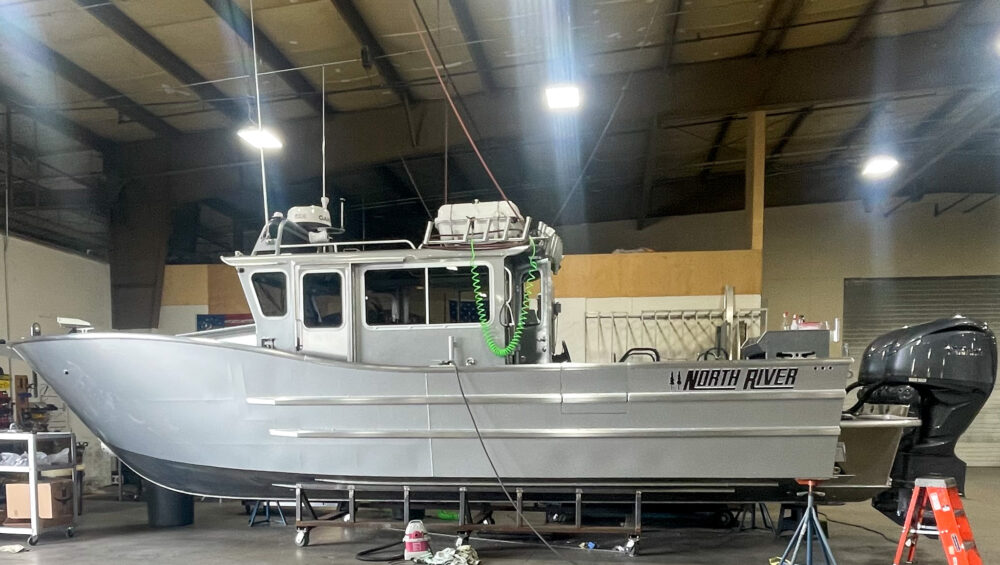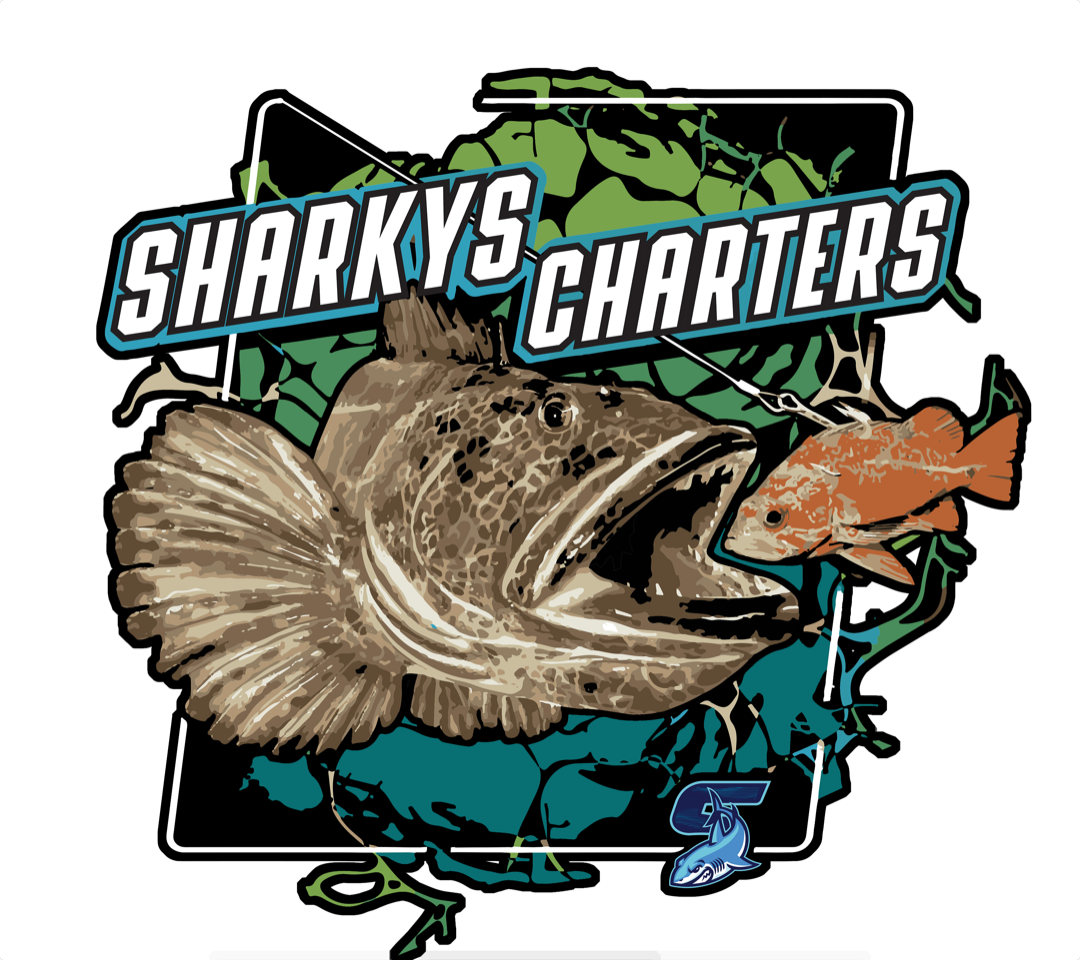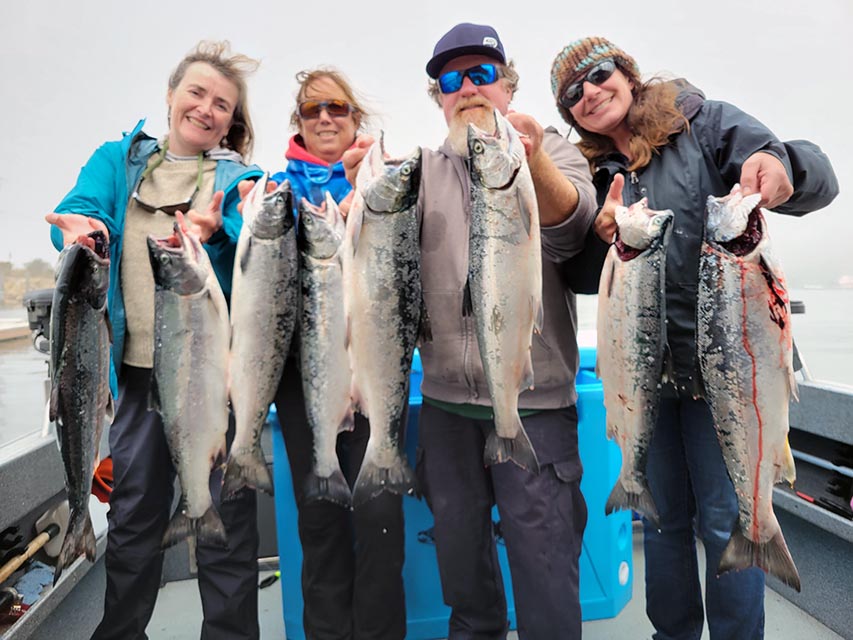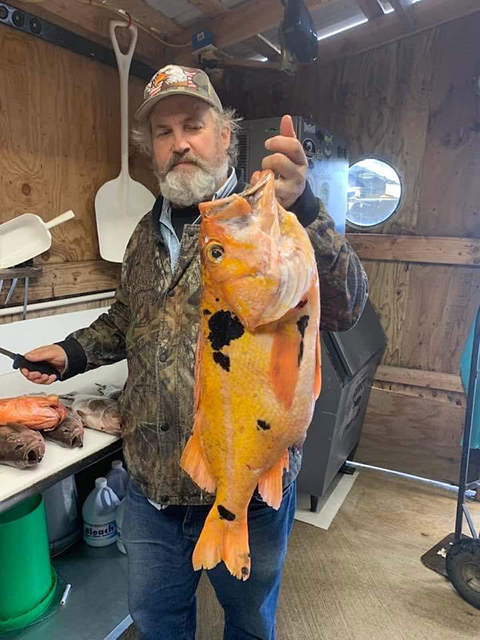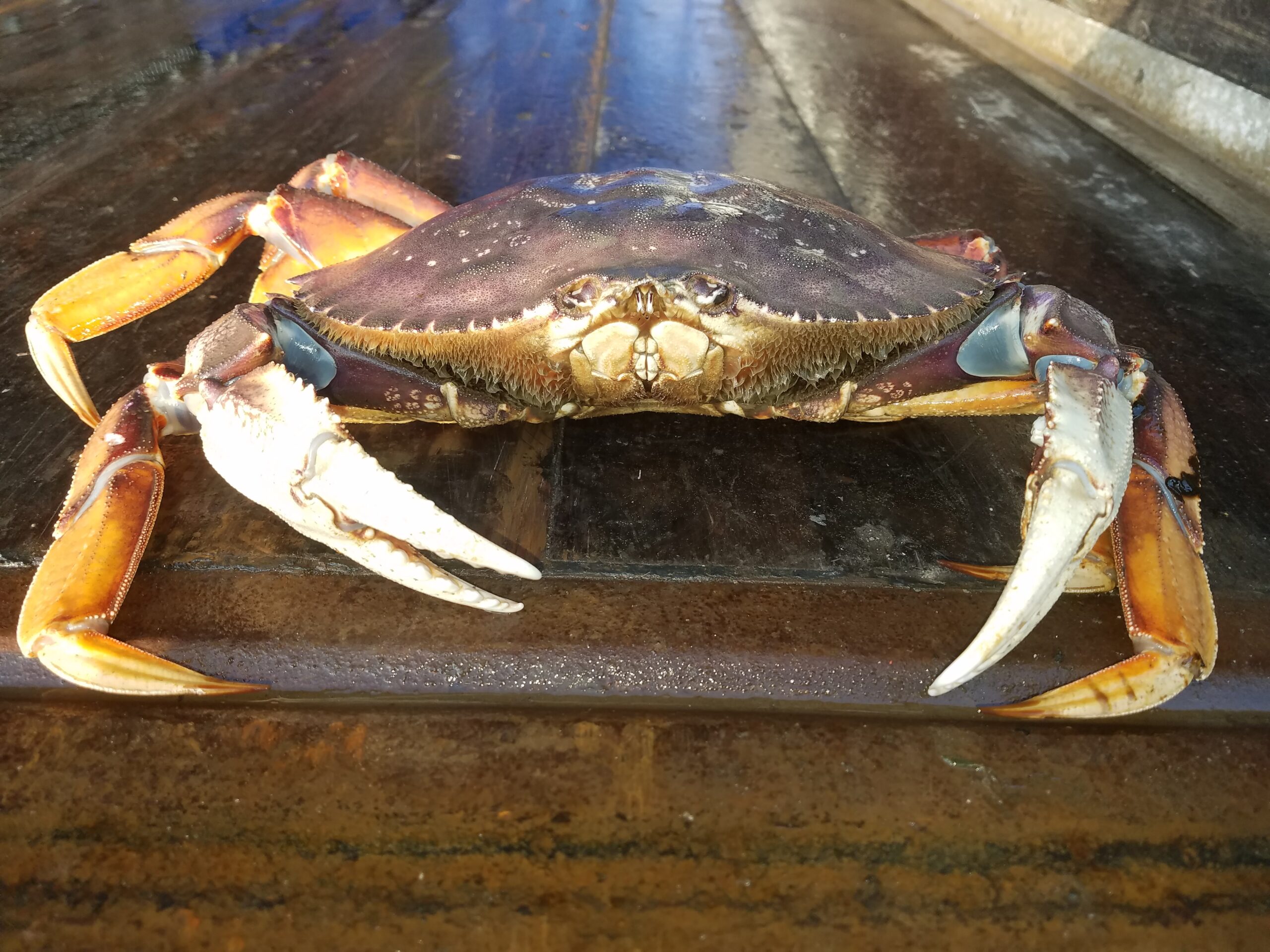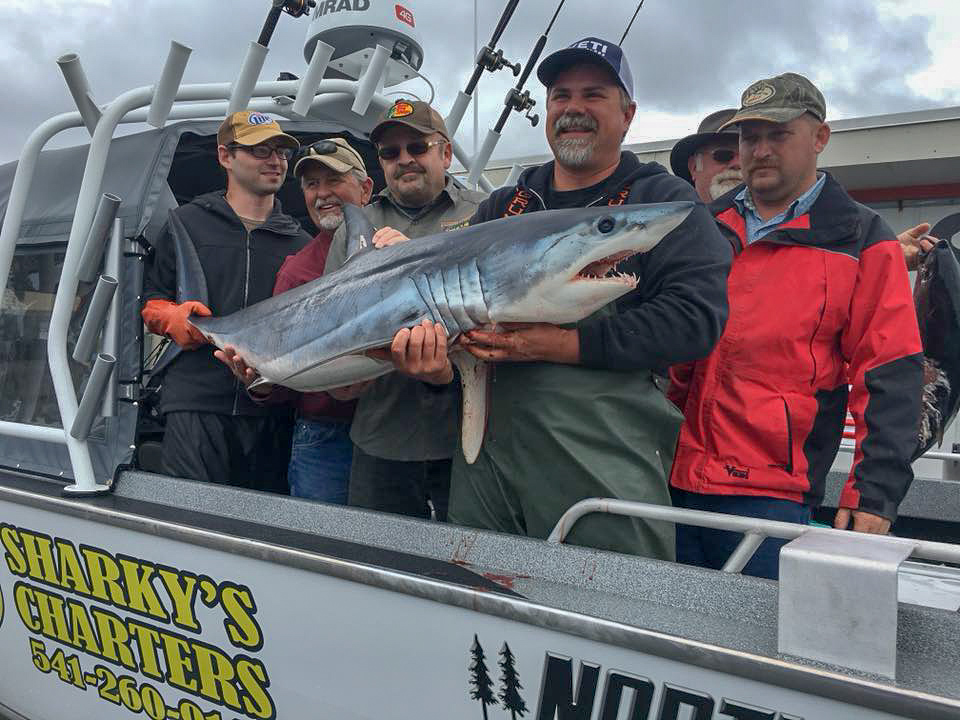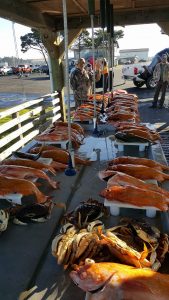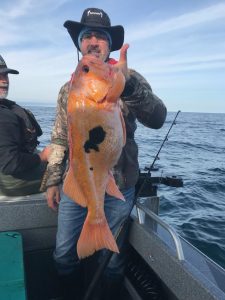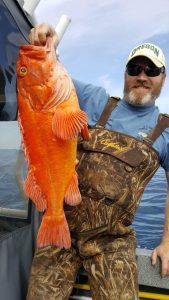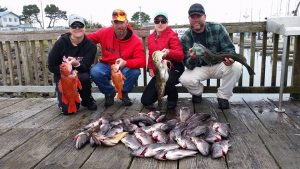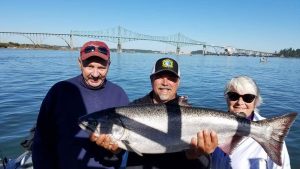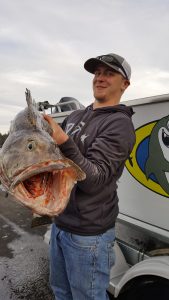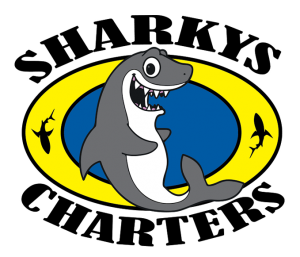Pursuing, sustainable harvesting, and eating wild protein gathered from the land or sea is a great passion of mine that I would like to share with you. In a world of fast food, and prepackaged meals it is easy to forget that the food you consume is the most basic ‘medicine’ for good life and prolonged health. Eating wild proteins will prolong and sustain your outdoor lifestyle while nurturing your hunter gather soul. At 43 years old, I realize half of my life is likely over and I want many more days in the field in the years to come. Staying active and eating right is how I live and I want to promote that same lifestyle to you as the path to success and a full life as an outdoors-man. Catching, cooking, and eating food from the wild will satisfy you on many different levels both physically and spiritually. I was born a hunter and fisherman and have a place at the top of the food chain. I am not complete unless I am out finding my place in nature. I want you to find your place in nature and live a full rich life. One of the super foods I recommend you seek out and harvest on your next adventure in life is the Dungeness crab. High in protein and essential omega-3 fats, this feisty crustacean will fill your stomach and leave you supercharged. In this article I am going to cover some of the most basic skills and products sold by Fish Field the crabber must have as well as some of the tricks I have learned over the years to fill my traps and belly with crab. So, if you’re looking for a saltwater adventure, or just looking for a few more tips on some of the basic gear needed for catching crab from a boat, dock, or shore then this blog is for you!
Just under the cold green and blue waves of Pacific Ocean that break along the west coast of Oregon, California, or Washington awaits one of the most prolific, ravenous, and sometimes mysterious crustaceans know to the saltwater adventurer. The Dungeness Crab. These large, agile, and extremely tasty crab are best served freshly steamed with melted butter. Sought out for their sweet and succulent meat by the hungry adventure, Dungeness crab are armed with strong pincers and they won’t go quietly into a boiling pot without a fight. To capture the crab the fisherman must first seek them out where they live and choose the correct trap, and bait for the situation.
Most recreational crabbing occurs from the shore, dock, or boat in depths from 15-100 feet of water. Dungeness crab amazingly occur in depths all the way out into and over 600 feet of water where only the heaviest commercial pots are able to fish! The basics of crabbing involve setting a baited trap or ring with a buoy and rope attached onto the bottom of the ocean floor, letting it soak for 15min up to a few days, then retrieval of the trap, and sorting of the catch for legal male crab. Male and female crab are easy to distinguish from each other visually. The state regulations on harvesting recreational crab will have good illustrations on how to sex the crab and each state has its own requirements for male size, license, and limits to harvest them.
Investing in superior crabbing tackle is one main step’s to ensuring a good catch. You get what you pay for when it comes to crab pots and rings. I don’t know how many times I have helped people that not catching and using traps that are poorly maintained, and improperly rigged, or to light for the area they are crabbing. A good crab pot or ring is made with stainless steel wire, rubber wrapped or coated, and has some good weight to it. Investing in the best equipment you can afford will pay huge dividends later. Follow this link https://fishfield.com/collections/shell-fish to quality traps and rings that Fish Field offers. Fish Field crab traps will catch you more crabs faster and hold them longer than any other product on the market. Choose between a ring or trap and get as many as the state will allow you to use per angler. In Oregon at the current time of writing this article anglers are allowed three traps per person. Having the maximum number of traps will increase your ability to cover more ground looking for that hot spot, and when you find it allows you to quickly harvest your limit. When you choose your trap keep in mind a few basic concepts: rings are usually baited and checked more often than traps, are more compact and lighter on average than traps, and usually less expensive. Both work in different ways to trap the crab. A ring will not hold a crab other than when the ring is being pulled and when bait is present. Rings fish fast, and can be pulled after only a few minutes, this is because the crabs don’t have to find a way through the trap gates. It’s easier for marine mammal like seals and sealions to steal your bait from the open ring. Using a ring off the dock is usually how people are introduced to crabbing and it’s a great way to spend an afternoon with friends and family when a boat may not be practical or available. Always lots to see and do on the docks while pulling rings and sorting through lots of undersized and female crabs. While you’re on the docks check out the weathered salmon troller’s, gulls, and sea lions. These are just a few things to see and photograph off the public docks. If you make it to my home town in Charleston, Oregon you will find the port friendly to the crabbing adventurer. Try your luck at one of the many dock fingers in the https://www.portofcoosbay.com/marinahome . I recommend D-Dock or E-Dock which are closest to the ocean, and the cool incoming water. Make sure to bring a bucket to sit on and put the live crabs in. If you are lucky enough to have a boat and can trap in the bay or ocean you will likely want to use a cage trap. The cage trap works by allowing the crab to pass through a one-way gate, attracted by the bait, and then traps them inside the cage where they can’t escape. High quality traps like those offered by Fish-Field often have three one-way gates per trap to increase the speed at which the traps catch by making it easier for the crabs to find an entrance into the trap. Cages are also good to use in the ocean and the bay because they allow you to set them and then go fishing or sightseeing for a few hours while the trap soaks and catches. Its always a great feeling knowing that trap is working while you are off fishing and adds the anticipation of the additional catch. If your going to set your traps in the bay or ocean where currents and tidal influenced depth changes are a consideration know your tides and get a current tide table. I like to use an app on my smart phone called Tide Chart Free.
Always a favorite topic among crabbers is what bait to use. I worked as captain on a commercial crabber for many years and now as professional guide. I can tell you my favorite bait to use is free bait! If I had to choose just one bait for a 6-8-hour crab trap soak my favorite would be three or four, one-night old medium sized rockfish carcass, pinned to the roof of the trap. If I plan on soaking my traps overnight, I will use a hanging bait like a rockfish carcass and then I will use a baiter that holds the bait inside of it so the smell gets out but the crabs in the trap cannot get at the bait to eat it. Squid or clams work really well for the baiter. Many other baits like chicken, turkey, squid, salmon, work well and can be easier to find than fresh fish carcasses. Chicken thighs from the local grocery store can work great and can usually be bought in 10lbs bags. If I am going to use chicken, I like the to put it on a bait pin so that the crab can eat it and break of little pieces that will float off in the current and leave a trail of bait and scent to the trap. A common misconception is that crab like rotten bait. This couldn’t be further from the truth. Fresh is best and lots of it. Pro-cure makes a great product, crab and fish attractant, that has really increased my catch http://pro-cure.com/store/bait-scent-products/scents/crab-and-shrimp-attractant-116.html . It based with fish oils and bite stimulants. Soak your bait in it overnight and it will supercharge your bait making a longer scent trail for the crab to follow. The days the crabs aren’t biting that good, the fish oil really makes up for its up for it and will increase your catch. When they are biting and hungry and you use the crab and shrimp attractant watch out! The traps will be so full!
Tides are a big consideration when crabbing, especially when your crabbing in the bay. Tides in Oregon are semi diurnal and variable. This means that there are two high, and two low tides within a 24-hour period and the height of the high and low differ. The greater the difference between the high and the low tide, measured in feet, correlates to the amount of current produced by the tidal change. The greater the difference between the high and the low tide the greater the current speed produced during the tidal exchange. When crabbing in the bay or ocean strong currents during tidal exchanges should be avoided as they tend to submerge buoys or in the worst case drift the trap off and it can be lost. There are places in the bay to get out of this direct tidal current. These are often located behind points and always out of the deeper current. Local knowledge and experience will help identify these places. Look for other crabbers and their buoys to locate some of these places. The Oregon Department of fish and Wildlife has also created maps of the many bays open on the Oregon coast. These maps identify good places to crab. A visit to the local ODFW office will provide you some valuable local knowledge also. The two hours around high tide are always the best and crab are most active and up feeding then. When a crab is not up and moving around feeding, they bury themselves into the mud or sand and rest and filter feed while conserving energy. I think a common misconception about crab is that their diet is based solely on scavenging for protein, when in fact the primary source of food for crab is plant based. Filter feeding on plankton, brought to them by the currents, serve as the basis for their mainly plant based diet. In the ocean strong current is less of a problem but can be encountered. Choosing the correct line diameter and buoy combination is very important because it keeps your buoys visible and up in less than desirable conditions when the current is running strong or in the ocean where the swell and wind are creating rough conditions. You can’t pull your traps if you can’t find your buoy. Many days in the ocean and bay have been saved for me because I used the correct length and diameter of line and appropriate buoy combination. I like using a sinking crab line or a neutral density line paired with two buoys in 5/16 to 3/8 diameter. For the depths that I recreation crab in a 5×11 main buoy and a small egg buoy trailer 8 feet behind the main buoy. Paint your buoys a unique color and pattern that distinguish your buoys from others. Have fun with this and be creative. The most visible colors are florescent. Many beginner crabbers tend to over buoy their gear resulting in lost traps. The buoy is so large that actually will drag the trap off when the current is strong or the swell surge pulls the rope tight. It is better to be under buoyed than over buoyed. The smaller buoy will pull under until the current or swell subsides and won’t float the trap off from where you set it. It is also a good idea, and required by some states to put your contact information on the buoy so that if it does get moved or lost there is a chance that you might get a call from another crabber that has found your lost pot. I prefer to fish in depths from 35 to 70ft when I crab in the ocean. On my traps I found that 100 feet is a good all-around length for most of my crabbing. You will want to find a soft sand or mud bottom to set your pots on. Using your vessels depth sounder is a good way to determine the bottom type. Every depth sounder is different but a good rule of thumb is the thicker the bottom line is and the more scatter under that bottom line is the harder the bottom is. Next time you are out look at your sounder and pay attention to the differences in the bottom line when you are over known rock of softer bottom substrates. When setting the pots, I will mark waypoints for each trap that I set and I most often set the pots in a string or line if you will. I spread the pots out when searching for crab, or I concentrate the string when I found a hot spot. The main thing is to leave enough distance between the traps so that when you go to pull them you aren’t drifting over top or drive onto to the line of a nearby pot. I like to use a electric crab pot puller made by Scotty. It saves my back and makes pulling traps easy. Otherwise pull it hand over hand and coil the rope as you go. Two people make this task a lot easier. When pulling the pots, I will try and determine the direction the trap is in relation to the buoy and approach so that as I grab the buoy and put the engine in neutral the boat slides toward the trap and creates slack in the line. You will know if you have approached the buoy from the wrong direction if the line becomes tight as soon as you grab it. Determining how to pick up the buoys is one of the great rewards and challenges a captain will overcome. If you ever find yourself over one of your lines and it has not become tangled in the prop the best thing to do is put the boat immediately in neutral and then allow the current to float your vessel off of the line. If line does get tangled in your prop, I will raise my motor up and then reach out with a boat hook and try to slip it off. If I was unable to I would cut the line as short as possible and reverse the engine to try and free the prop. Many times, the prop will cut the line and free you. If you can’t free yourself be sure to set anchor immediately if your drifting towards a hazard. Signal a nearby vessel for help or call the coast guard. You can always call the help off if you remedy the situation yourself.
Finding the crabs sometimes can be tough and mysterious. They also go on and off the bite. This is especially the case in the spring. Crab don’t occur everywhere and sometimes you have to look for them. If I am not catching crabs I move. Try a different location or depth. Sometimes the crab are all caught up on certain grounds or other times all you might be catching is female crab and small males. If this is the case move a great distance maybe miles until you find the big male crab. They are usually together. One trick I use in the spring when crabbing gets tough because they commercial fisherman have caught most of the large keepers, I go looking for places near hard bottom and reef where it is tough to set a string of gear. One good pot can yield as much out of one of these hidden areas as a string of ten in a picked over area. Move your gear until you find the crab. In the spring I usually will crab in depths around 60 feet while in the ocean. Any shallower and I feel I am risking losing my pots if a swell greater than 6 feet comes up. In the summer, when the swell is usually below 6 feet I may move in shallow as 30 feet. Safety is always a concern when crabbing on the shallow beach areas. Its always a good idea and basic seamanship to have an anchor aboard sufficient to stop your vessel from drifting into the breakers if you were to have a motor be disabled.
Now that you have caught some crab keeping them alive until you can cook them is important. I like to place the live crabs in a bucket or large cooler where they can settle down and be out of the direct sun and wind. Keeping the crab moist with saltwater will prolong their life. I have kept crab alive in a cooler with a saltwater soaked burlap bag for 24 hours many a time. Do not however make the mistake of placing the crab in a bucket of seawater and thinking they will do better submerged for extended time. What happens is the crab breath the oxygen out of water and excrete co2 into the water. Left to long in the bucket filled with water they will drown and die. Dead crab should not be eaten as the meat degrades very quickly. Left out in the air and kept moist they can survive much better. You can choose to cook the crab whole with out removing the shell or remove the shell, guts, and gills. A quick search on You Tube should find a video on how to clean them. I like to steam my crab after cleaning them. The meat comes out white and I leave all the mess at the cleaning station on the dock. I like to steam them for between 15 -20 minutes. If you choose to boil them whole do this for at least 30min at a rolling boil. Some people prefer boiling the crab because it adds the flavor from their guts to the meat. I think it makes it taste to crabby. Each to their own! Once cooked I crack the shells and enjoy. One 2-pound crab full of meat in the winter will yield a salad bowl full of meat!
Now that you have the basics and a few new tricks from the captain get out and crab this season and catch some of the best wild free-range protein in the sea. Feed your passion for adventure, and explore the Pacific Ocean and coastline. There are many unique and wonderful ports to visit in Oregon. Crabbing is a great way to spend the day or just add to the catch of fish the end of the day. With a bit of practice and the right bait and quality equipment from Fish-Field you to will be catching crab like a pro and eating healthy!
